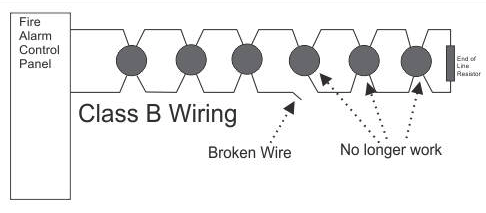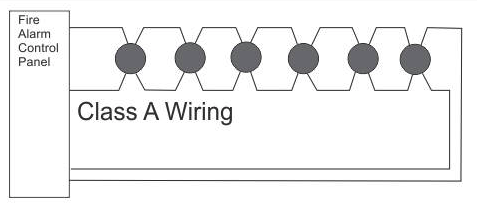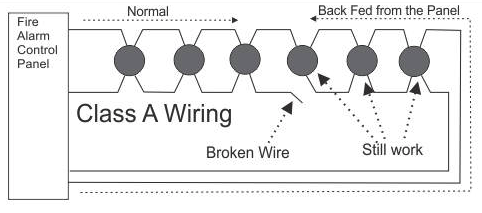
An increasing number of specifications are defining requirements for Class A or Class B wiring for life safety systems and technology that comprise, enhance, or complement said systems. The different wiring methodologies pertain to how a conventional fire alarm panel, or other mass notification system, is monitoring the speaker signal chain for faults. Additionally, it identifies requirements for the system design to mitigate those faults.
For a Class B circuit, the speakers are wired in a pattern that allows for supervision features to monitor the integrity of the signal path.

In Class B wiring style, if a wire breaks, the devices beyond the break will NOT communicate with the panel. There is loss of signal and functionality of the system, and the supervising system detects the fault.

For Class A circuits, there is additional redundancy to maintain system functionality through the fault condition, all the while still recording the fault condition with the supervising system.

This redundancy ensures that communication and instructions can still be heard in zones beyond the fault in the circuit.

A common speaker line supervision approach involves applying a DC Voltage to the speaker lines. AtlasIED integrated power amps had traditionally used DC Voltages to monitor speaker lines for ground faults, which is a condition in addition to breaks ("opens") for which monitoring is required in most life safety systems. These voltages are also used for break detection when the return line is supervised, so DC Voltages can be present on speaker lines for either break or ground fault detection.
If a project requires single wire break detection, which many fire codes/standards do, then the system must use speakers that have DC blocking capacitors. This keeps the DC voltages on the two circuit wires separated so that a break in either wire can be detected by the supervising system.
AtlasIED has speakers designed for both Class A and Class B requirements.


